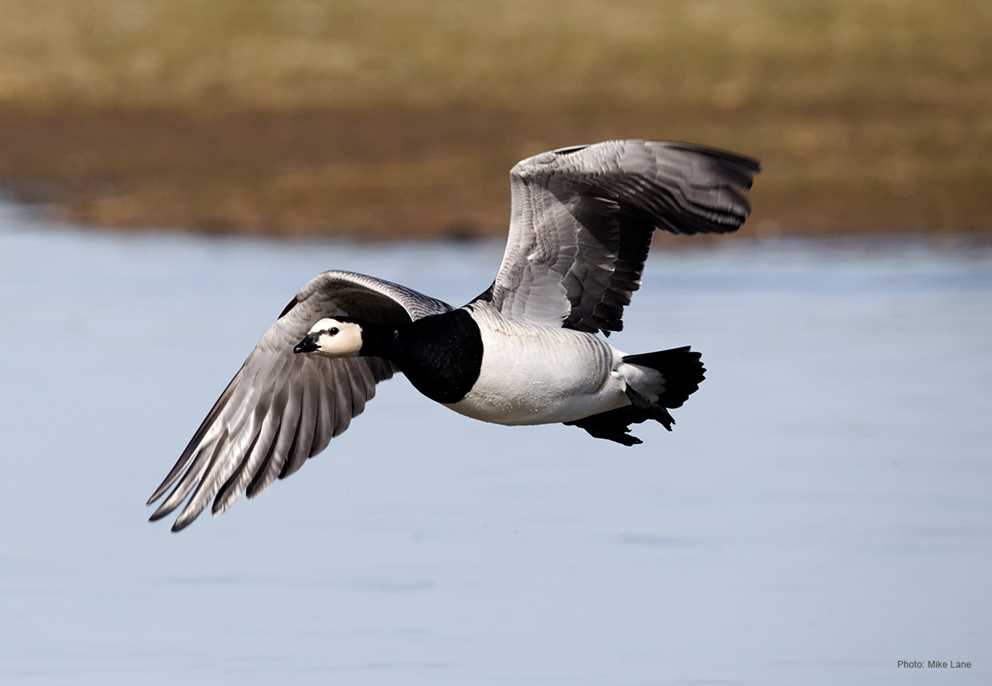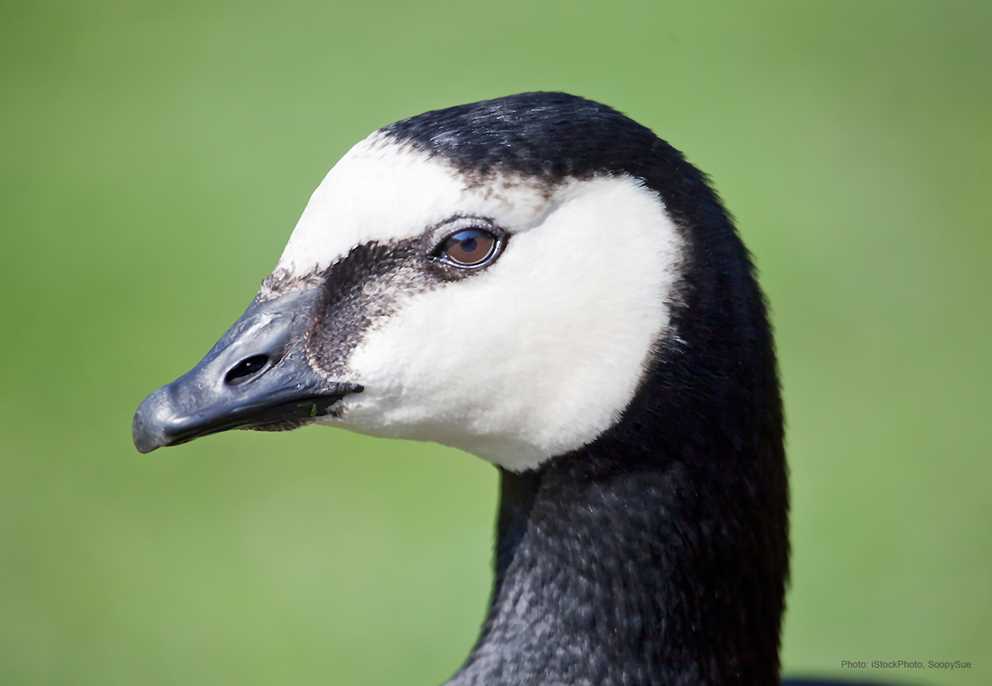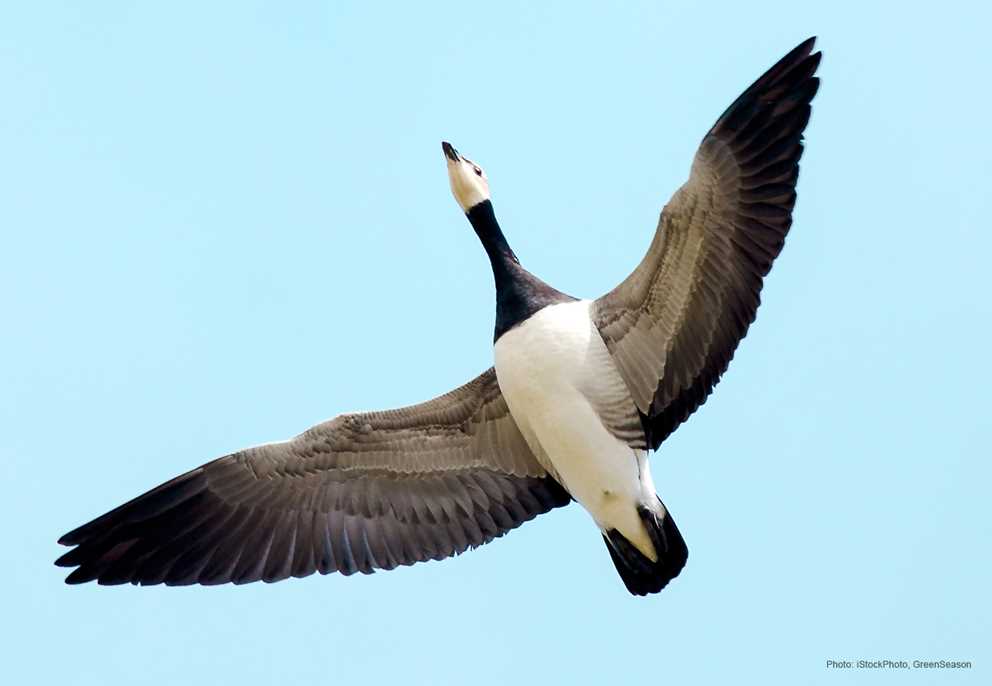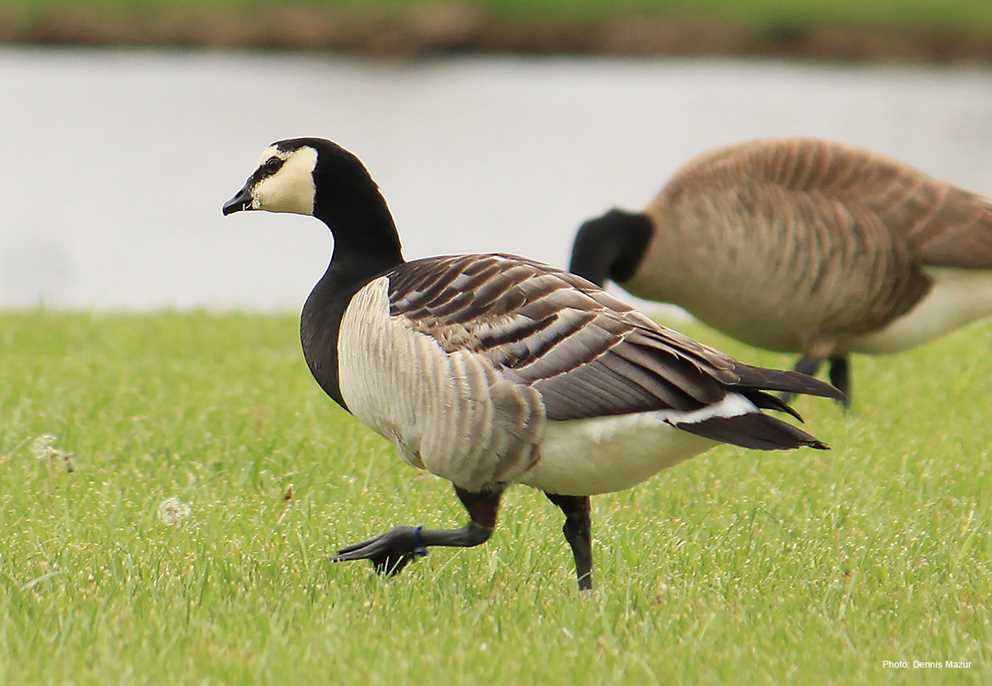Breeding
Barnacle geese breed along the northeast coast of Greenland, Svalbard, Norway, Novaya Zemlya, and adjacent Vaygach Island, Russia. There are no breeding records of barnacle geese in North America. Barnacle geese nest in small colonies among rocky crags or on cliffs and islands and lay an average of 4-6 eggs.
Latin: Branta leucopsis
Average length: M 27.0", F 23.5
Average weight: M 4.03 lbs., F 3.57 lbs.
Description
Barnacle geese have a black chest, neck and crown, with a cream-white face. The sexes are similar in appearance, but males typically are larger. The extension of black from the neck over the head gives the face a hooded appearance. The upper back is black, shading posterior to silver-gray. The breast, sides and flanks are a pale gray and the belly, undertail coverts and rump are white, contrasting markedly with the large black tail. The bill, legs and feet are black.
Food Habits
Barnacle geese feed on grasses and coastal plants found in salt marshes, grasslands near river estuaries or tidal mud flats.
Population
There are four distinct populations of the barnacle goose: Russian, Greenland, Svalbard, and Baltic Sea. The Russian, Greenland, and Svalbard populations have all increased since first surveyed in the 1950s, with the Svalbard population seeing a 6.6% annual increase from 1958 to 2017. The Baltic Sea population initially appeared in 1971, having increased to approximately 60,000 individuals today. While they don’t breed in the U.S., occurrences of barnacle geese along the Atlantic coast have steadily increased since the 1970s.
Migration and Wintering
The Greenland population of barnacle geese winter in Ireland and the Inner and Outer Hebrides of Scotland. The Svalbard population largely winters in the Solway Firth between England and Scotland. The Russian population winters in the Netherlands and Germany. In North America, infrequent appearances by barnacle geese have been restricted to the east, including Labrador, Ontario, Quebec, Massachusetts, New York, Vermont, Ohio, and Michigan.




